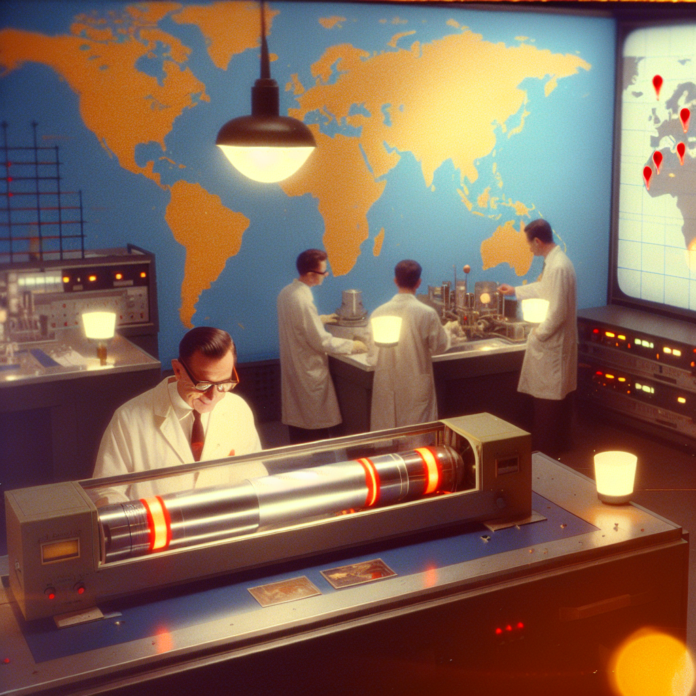Mana Battery Leads Geopolitical Race in Sodium-Ion Battery Innovation
A New Energy Frontier: The Rise of Sodium-Ion Batteries
As the world intensifies its pursuit of cleaner and more sustainable energy solutions, battery technology emerges as a front-line arena in the race toward energy independence and decarbonization. One of the most promising alternatives to the widely used lithium-ion battery is the sodium-ion battery—a technology gaining renewed momentum in both research and commercialization efforts. Leading the charge is Mana Battery, a groundbreaking venture funded by the U.S. Department of Energy, which is aggressively racing global competitors to perfect sodium-ion battery technology.
Why Sodium-Ion Technology Matters
Sodium-ion batteries offer a compelling alternative to lithium-ion counterparts for several reasons:
- Abundance of Sodium: Sodium is significantly more abundant and geographically widespread than lithium, leading to fewer geopolitical supply vulnerabilities.
- Lower Material Cost: Sodium is far more affordable than lithium, cobalt, and nickel—other essential elements in lithium-ion batteries.
- Environmental Advantages: Sodium extraction has a lower environmental impact compared to lithium, making it more sustainable.
- Safety: Sodium-ion batteries have a lower risk of overheating and are generally more stable during operation.
Given these benefits, companies like Mana Battery are betting big on sodium-ion innovations to revolutionize energy storage systems used in transportation, renewable energy grids, and portable electronics.
Mana Battery: America’s Answer to Global Battery Competition
Mana Battery was formed in 2023, combining expertise from several seasoned engineers and scientists across national labs, universities, and private sectors. Headquartered in Boulder, Colorado, the startup has received critical backing from the U.S. Department of Energy’s ARPA-E program to scale up production and enhance research into viable sodium-ion alternatives.
In a recent interview, co-founder and CEO Dr. Amy Xu stated, “We are building the foundation for the next generation of energy storage. Our sodium-ion batteries are not only eco-friendly and cost-effective but scalable for mass deployment.”
Mission-Focused Innovation
Mana’s development strategy focuses on performance parity with lithium-ion cells while offering superior cost-efficiency and safety. Their proprietary battery design incorporates advanced cathode and electrolyte materials that enable improved cycle life, energy density, and cyclability.
Unlike traditional startups, Mana Battery takes a dual-pronged approach by simultaneously working on commercial deployment and material innovation. This ensures both near-term market applicability and long-term sustainability.
The Global Race for Battery Supremacy
As geopolitical tensions rise over access to critical minerals like lithium and cobalt—resources heavily concentrated in a few regions—countries are turning their attention to battery technologies that offer security of supply. China, South Korea, and the European Union have heavily invested in sodium-ion research, with several firms in China already rolling out pilot-scale production.
Mana Battery’s advancements are part of a broader U.S. strategy to compete against this new wave of global innovation.
Government Backing and Strategic Alliances
The U.S. government has recognized the strategic value of domestic battery innovation. Mana Battery’s $10 million grant from the Advanced Research Projects Agency-Energy (ARPA-E) highlights the importance being placed on accelerating sodium-ion technology to secure America’s energy future.
In addition, Mana Battery has formed vital partnerships with national laboratories and academic institutions—including the National Renewable Energy Laboratory (NREL) and Colorado School of Mines—to enhance R&D output and support workforce development.
Overcoming Key Challenges
Despite the potential, sodium-ion batteries face transition hurdles before they rival lithium-ion batteries in real-world applications.
- Lower Energy Density: Current sodium-ion designs still lag behind lithium-ion when it comes to energy density, limiting their use in high-performance electric vehicles.
- Infrastructure Gap: The existing manufacturing infrastructure for lithium-ion cells is well-established, whereas sodium-ion systems require retooling and new supply chains.
- Commercial Readiness: While lab results are promising, large-scale production and real-world durability validation are still in early stages.
Mana Battery is addressing these issues through sustained investment in next-generation electrode materials and scalable, modular production systems designed to fit into current energy infrastructures.
Commercial Applications on the Horizon
Mana Battery envisions multiple use cases for their sodium-ion technology over the next three to five years. These include:
- Grid Storage: Sodium-ion’s cost-effectiveness and safety profile make it ideal for energy storage in grid-level renewable installations.
- Electric Buses and Fleets: Fleet vehicles with predictable routes can benefit from sodium-ion power trains that don’t require high energy density but demand cost efficiency and longevity.
- Consumer Electronics: Low- to mid-range electronics represent another viable application, especially in regions where lithium-ion supply chains are vulnerable.
Mana is currently in talks with multiple energy companies and public transit agencies to pilot its first generation of sodium-ion battery systems in 2025.
The Road Ahead: Scaling to Market
Scaling from lab breakthroughs to industrial production is no easy feat. Mana Battery plans to construct a pilot manufacturing facility in Colorado by late 2025, with a projected capacity of 100 megawatt-hours annually. The pilot plant will serve as a blueprint for future gigafactories, potentially enabling the U.S. to locally produce large volumes of sodium-ion cells.
Xu emphasized, “We’re not just innovating—we’re industrializing. Our aim is to bring sodium-ion cells to the mainstream marketplace within the next decade.”
Conclusion: A Pivotal Moment for Energy Innovation
As the world transitions from fossil fuels to renewable energy, the importance of sustainable and scalable battery technology cannot be overstated. Mana Battery’s efforts could significantly contribute to reducing the global reliance on limited lithium reserves, democratizing battery manufacturing, and promoting energy equity across nations.
Through a coordinated approach backed by innovation, strategic partnerships, and public investment, Mana Battery stands at the forefront of a new energy era—one where sodium-ion technology may level the playing field for countries large and small in the transition to a sustainable, electrified future.
The coming decade will reveal whether sodium-ion batteries can live up to their potential. If they do, Mana Battery may well be remembered as the company that sparked an energy revolution.


